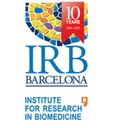Understanding the assembly of neuronal cilia, the structures that sense chemicals and mechanical forces (thus allowing for smelling, hearing, and many other essential functions). 2 |
PRESS RELEASE This study focuses on a type of neuronal cilia, the structures that by sensing chemicals and mechanical forces allow for smelling, hearing, and many other essential functions. Many cells in our bodies present a small structure that looks like, and as a matter of fact works as an antenna, conveying to the cell information on the extracellular environment. They are called cilia (plural) or cilium (singular). Ciliated cells play essential functions in the human body. Thus, for instance, the monitoring of fluid flow in the kidney, the detection of hormones in the brain, or the senses of hearing and smell depend on specialised neurons equipped with chemo-sensory or mechano-sensory cilia. Moreover, besides sensing, beating cilia keep fluids in motion in many parts of our bodies and are critical for human health. A cilium can be regarded as a long and thin protrusion of the cell membrane that contains microtubules. Ciliary microtubules are arranged in a typical radial symmetry that is conserved through evolution and is templated by a small organelle that sits at the base of the cilium, known as basal body. Most animal cells contain two basal body-like structures (centrioles), but only one of them can actually work as basal body. In human cells, this is always the centriole that is said to be the "mother" (red dot in this image) because it was assembled earlier than the other, called the "daughter" centriole (green dot in this image). |
|
A method to transplant tumours in flies.The revival of an old, but powerful technique. |
PRESS RELEASE A method to transplant tissue from donor larvae to adult fly hosts, which can be used to study many biological processes including malignant growth. In 2002, when facing a major technical problem, the Gonzalez group took advantage of two of the many benefits of using the vinegar fly, Drosophila melanogaster, for scientific research: the variety of methods and tools generated over more than a century of work with this fascinating organism, and the culture of sharing that is deeply rooted in the Drosophila research community. The problem was to carry out in flies an assay that is standard to investigate cancer in mammals, including humans, which consist in transplanting the tumour mass to mice; implanted healthy tissues cannot overgrow, but malignant tumours grow without limit and kill the host. The solution seemed simple because, indeed, among the battery of methods developed by fly researchers there is a technique for tissue transplantation. But there still was a problem. |
|
Key protein in sperm tail assembly identified |
status code The study, published in The Journal of Cell Biology, focuses on the development of the sperm tail, the structure that enables sperm cells to swim and is therefore critical for male fertility. In flies, as in humans, the sperm cell (spermatozoon) is made of the cell body proper, which is also referred to as the sperm “head”, and the flagellum. The flagellum, also known as the sperm “tail”, is a slender lash-like appendage that protrudes from the cell body. It is by beating their tails that sperm cells can swim to reach and fertilise the female reproductive cell (oocyte). A bundle of microtubules that span the entire length of the tail is critical for flagellar beating. These microtubules are arranged in a characteristic radial symmetry that is conserved through evolution and is templated by a small organelle that sits at the base of the flagellum, known as basal body. Using the vinegar fly Drosophila melanogaster as an animal model to investigate how the sperm tail develops we found that CENTROBIN plays a critical role in the assembly of a subset of microtubules within basal bodies. In the absence of CENTROBIN, basal bodies lack these microtubules and so do the tails that they template that are not motile. Consequently, CENTROBIN mutant males are sterile. |
|
How similar are fruit fly and human cancers? New evidence for genome instability in fly tumors suggests key similarities—and differences—from human disease processes. |
Read ARTICLE SUMARY publsihed in Genetics Society of America's blog, Genes to Genome s |
In Plain English
[[
]]

